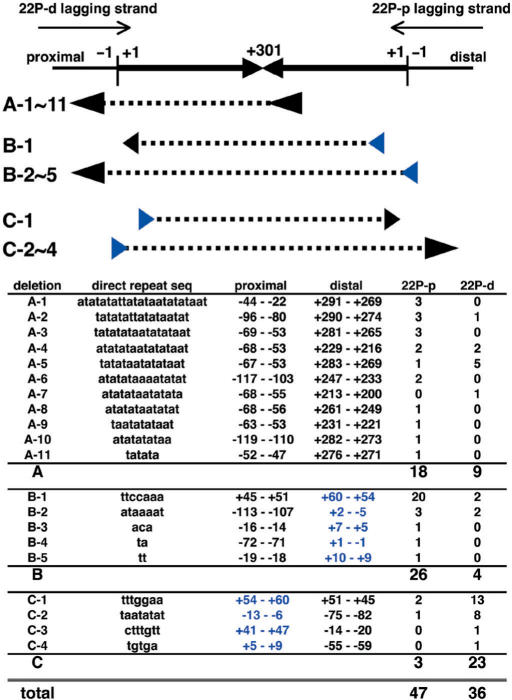Figure 7.
Sequence analysis of the PATRR22-pal deletions in AB1157 strain. The head-to-head arrows represent the palindromic sequence of the PATRR22-pal. Numbers with a plus (+1 to +301) indicate the position of bases from the end of the palindrome (vertical bars) in both the proximal and distal arms, while numbers with a minus indicate the positions of bases outside the PATRR. The larger plus numbers indicate positions closer to the centre (i.e. the palindrome is labelled from +1 to +301 and back to +1). Thin arrows represent the direction of lagging strand synthesis in the PATRR22-pal-pBluescript II-KS (22P-d) and -SK (22P-p) plasmids. Deletion types are classified by the positions of direct repeat pairs (arrowheads) that flank the deleted sequences (dashed lines). One of a pair is located near the centre in the type A deletions, and is located at the distal and proximal ends in the type B and type C deletions, respectively. The different distribution of direct repeats supports the existence of different putative mechanisms for these deletions.

